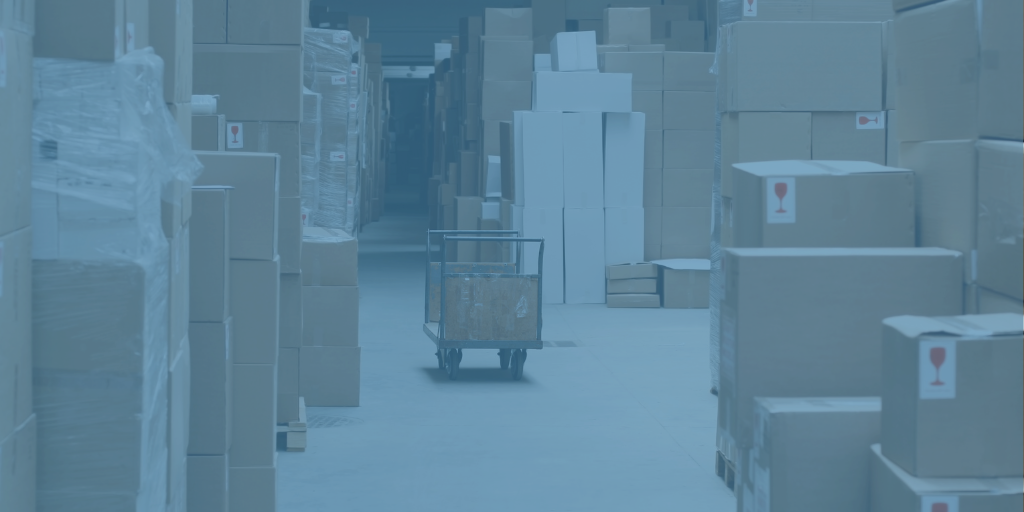Ultimate Parcel & Freight Guide - One Click Logistics eBook Bundle
We offer a complete eBook bundle for businesses that ship parcel and freight, with tips spanning the full supply chain cycle, from rates, digitizing...
3 min read
FreightPOP : Jul 11, 2022

Continuing supply chain concerns, more restrictive access to capital, and labor issues have left many companies scrambling to find ways to streamline and deal with reduced headcount.
This has become a front-burner problem for shippers, especially considering the 21.7% increase in transportation costs we've seen over the past year. Controlling costs is more crucial than ever.
While the push to grow revenue and handle logistics smoothly and efficiently hasn't changed, we're entering a period where we all have to do more with less. At the MODEX show earlier this year, panelists discussed the 2022 Annual Industrial Report, which detailed the three most significant challenges facing the industry:
Overcoming these challenges requires taking a fresh look at systems, processes, and personnel to optimize workflow. Logistics automation is top of the list as companies look for greater efficiencies.
Organizations waste a lot of time relying on spreadsheets and tribal knowledge to get work done. Gone are the days when you can quickly expand or contract your workforce to fit demand. It's not so easy to find people and train them when you need it.
By automating manual tasks, you transfer people from low-level manual work to higher-value roles within the organization that help grow your business, or you can reduce staff size to save on wages.
With the right logistics management platform (aka TMS), you can automate this work and optimize your results at every stage of the shipping process.
Shopping carrier rates using websites, email, or the phone is time-consuming and doesn't always produce the best rates. You can automate rate shopping using a TMS. For example, FreightPOP lets you compare parcel, LTL, and FTL freight rates from over 300 carriers in a centralized platform.
This saves a lot of time. How much time? In our post, Grow Your Business With A Transportation Management System, we highlight a typical customer story where an online retailer went from 8 staff handling order taking, processing, shipping, and auditing to just 3 staff members! They saved 200 man-hours a week!
The right TMS platform will also let you ship via multiple modes of transportation. Managing parcel, LTL, FTL, and international shipping in one system, including multi-leg shipping. (Learn more about this on our SmartPOOL Distribution page).
![]() You can also automate your freight tracking in one place rather than juggling information from multiple carriers. This is especially important for multi-leg shipments where delays can cascade quickly.
You can also automate your freight tracking in one place rather than juggling information from multiple carriers. This is especially important for multi-leg shipments where delays can cascade quickly.
Not only can you track all of your inbound and outbound freight, but you can automatically notify your customers.
With tightening margins, shippers need an easy, automated way to audit invoices. Mistakes happen more frequently than you might think. Shipments get lost, show up late, or the wrong rates are charged. With an automated logistic management platform, you can automate the tedious process of quote matching to ensure you're getting what you paid for at the correct rate.
As we outline in our post, Accurate Invoicing Is Just As Important As On Time Delivery, there are three types of invoice auditing processes. You can either:
1) Manually check invoices in-house
2) Use a TMS solution that automates auditing
3) Use a TMS solution in conjunction with a 3rd party solution that goes after the money
Whichever method you choose, heed the advice of FreightOptics CEO Brad McBride:
"Whether you audit through TMS matching and have your staff handle the exceptions with carriers, or outsource to a third party such as a trusted partner like FreightOptics, you need to be conducting freight audits on every single shipment."
You can also leverage the power of Big Data by combining artificial intelligence and industry best practices to optimize your entire supply chain and shipping process. Descriptive analytics allow you to slice and dice data to uncover exactly what happens with your carriers and load. For example, you can find out:
Diagnostics analytics allow you to identify errors more quickly, so you can take proactive steps to prevent them from happening again. Predictive analytics also lets you test various scenarios to assess their impact. For example, you can easily evaluate the long-term effect on your shipping costs due to the increased fuel price or limited capacity within shipping lanes.
Prescriptive analytics is a powerful tool that analyzes your data to find correlations you might miss. It looks at how things impact others and automatically provides recommendations to improve and optimize your operations.
Having analytical data of your shipping at your fingertips also makes you a dynamo in carrier negotiations. Trust us, carriers have this sort of data readily available - they negotiate with shippers every day. To go head-to-head in contract negotiations, have data to back you up!
By automating your shipping processes, you reduce manual tasks and do more with less! In good times, this helps you accelerate your growth. In uncertain times, it may just save your business!
Need more hot tips from logistics experts? Download your copy of our new ebook, 6 Ways to Save Money on Freight and Logistics You May Not Have Considered. This ebook serves up timely advice from high volume shippers and logistics management professionals. Do not miss their insight!

We offer a complete eBook bundle for businesses that ship parcel and freight, with tips spanning the full supply chain cycle, from rates, digitizing...

As COVID continues to disrupt supply chains and consumers rely heavily on online purchasing, shippers need to prepare for an influx of holiday...

Logistics analysts expect some relief in managing supply chains but are divided on whether that will come in 2023 or 2024. As companies streamline to...